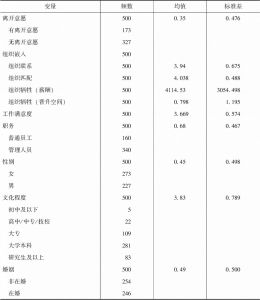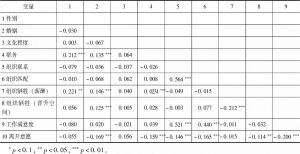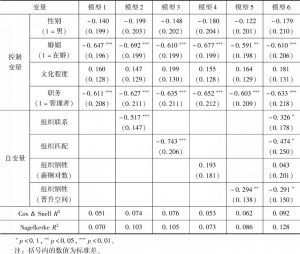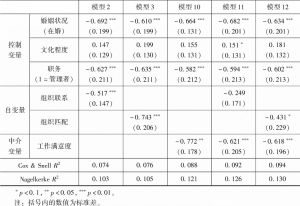论文
组织嵌入、工作满意度与离开意愿
摘要
本文基于2014年中国公益人才发展现状的调查数据,采用二元logistic回归分析探讨组织嵌入对公益组织员工离开行业意愿的影响,以及对工作满意度的中介作用。研究发现:①组织联系、组织匹配对公益组织员工离开行业意愿有显著的负向影响;②组织牺牲维度中的晋升空间与公益组织员工离开行业的意愿呈显著负相关,然而薪酬对公益组织员工离开行业意愿没有影响;③工作满意度是组织联系和离开意愿之间的完全中介变量,也对组织匹配影响离开意愿起到部分中介作用。研究表明,薪酬并没有影响公益人才的离开意愿,因此,应该通过增强组织联系、提升组织匹配程度和扩大晋升空间等行业建设措施留住公益人才。
检索正文关键字
论文目录
- 一 研究背景
-
二 文献回顾与研究假设
- (一)组织嵌入与离开意愿
- (二)工作满意度的中介作用
-
三 数据、变量及方法
- (一)数据来源
- (二)方法与变量设计
- 1.离开意愿
- 2.组织嵌入
- 3.工作满意度
- 4.其他相关变量
-
四 分析结果
- (一)主要变量的相关分析
- (二)组织嵌入对公益组织员工离开意愿的影响
- (三)工作满意度的中介效应检验
- 五 结论与启示
相关文献
查看更多>>>








